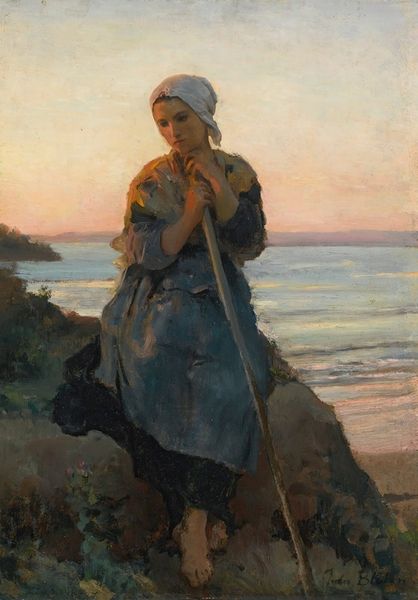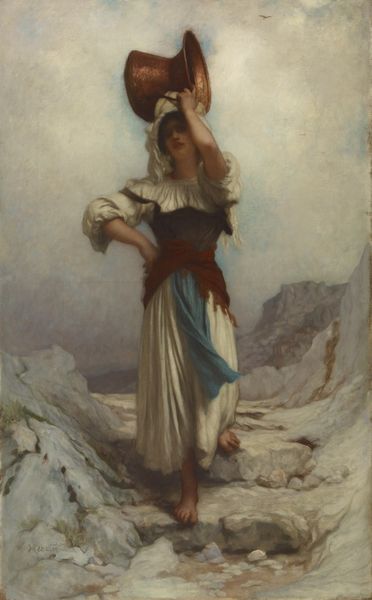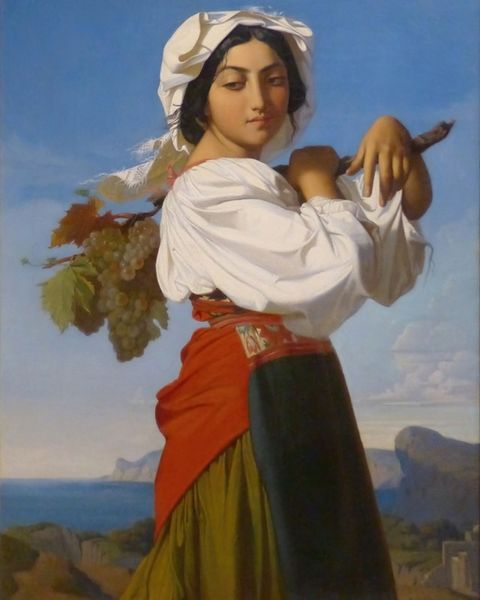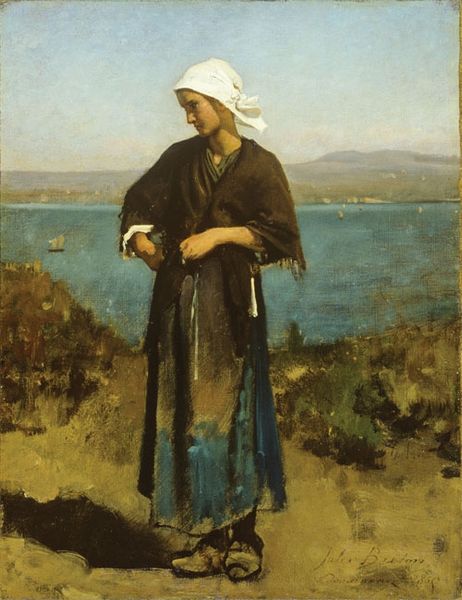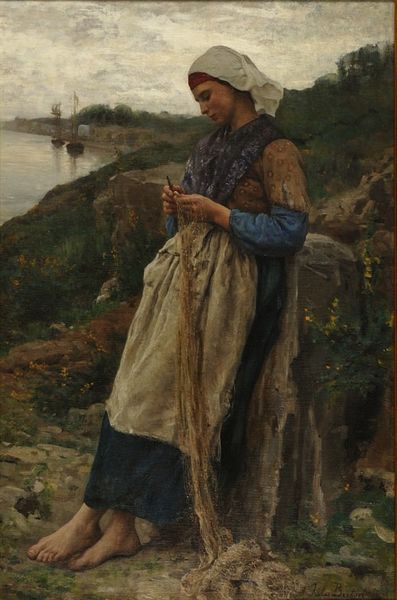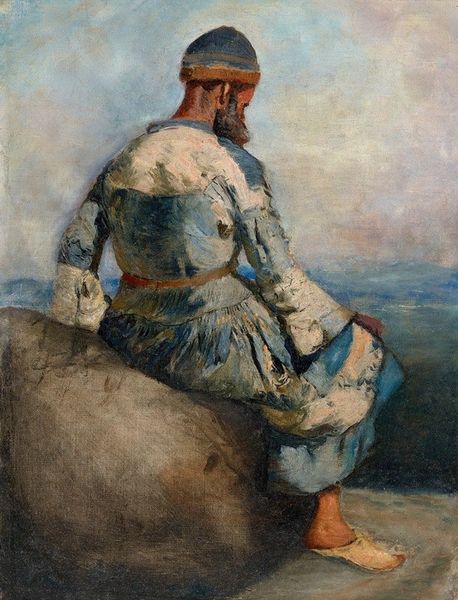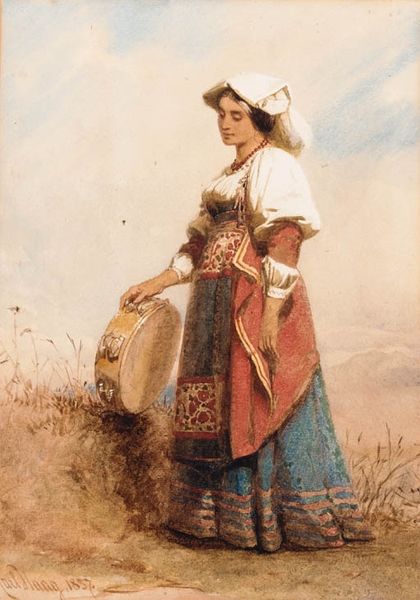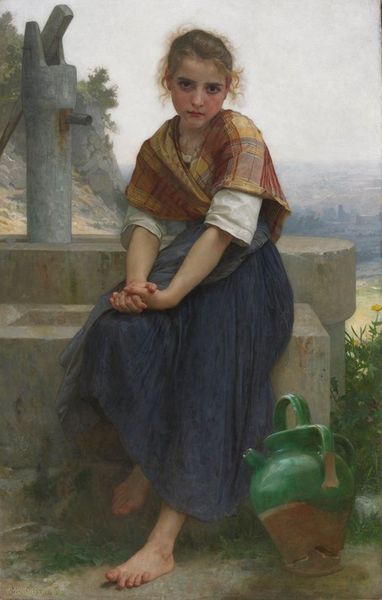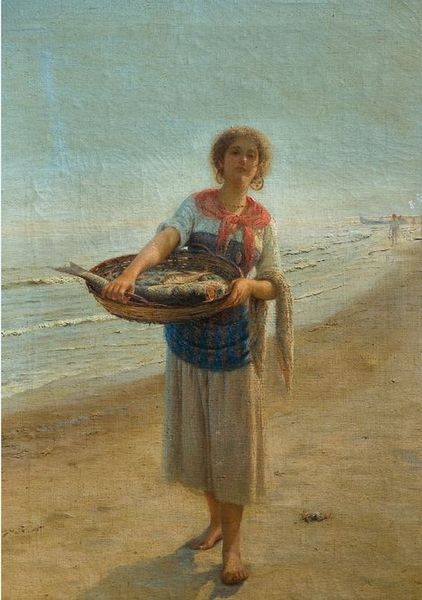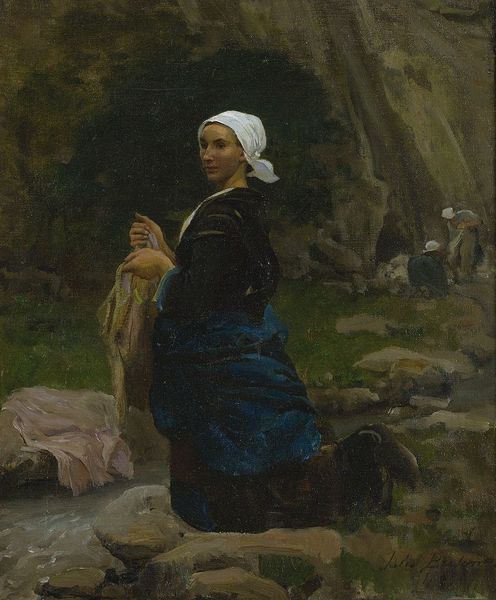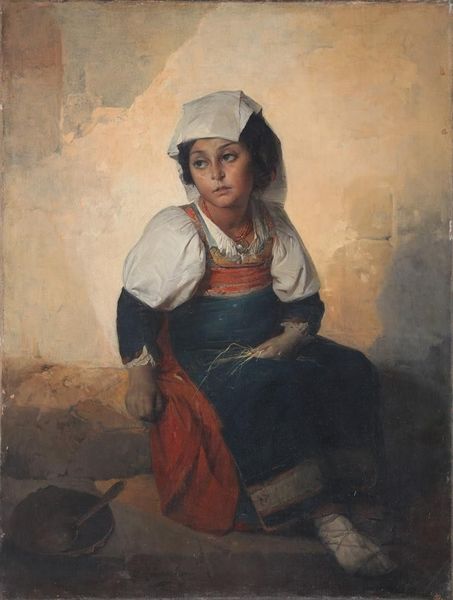
Copyright: Public domain
Editor: This is "The Flax Spinner" painted in 1872 by Jules Breton. It’s an oil painting of a young woman sitting by the sea and the overall impression is of a kind of serene melancholy. What strikes you about this piece? Curator: It's interesting how Breton romanticizes rural life, particularly the lives of working women. What we see here is not just a portrait but a constructed image that both celebrates and perhaps obscures the realities of labor. Notice her bare feet – what does that say in relation to her class and the backbreaking labour flax spinning demands? Editor: I see what you mean. It's beautiful, but it also feels a bit idealized, or even posed. She's working, but it's in a very picturesque way. Curator: Exactly. Think about the social and political context of 19th-century France. There was a growing interest in rural life, but often filtered through an urban, bourgeois lens. Consider how Breton frames this young woman. Is she empowered or objectified? What does it mean to depict labor in such a pastoral, almost aestheticized manner, divorcing it from the drudgery inherent in the task? Editor: So, by showing her this way, he’s not really showing her reality? He is showing the fantasy of what working is like? Curator: In some ways, yes. He presents a sanitized version of labor, one that’s palatable to his audience. It is critical to reflect upon who profits from this image and who does not. Editor: This really makes you think about how artists frame their subjects. Curator: Indeed! And whose stories get told and whose are left out of the frame. Considering those questions, how does that change how you perceive "The Flax Spinner"? Editor: I now think it captures a moment in time, but it also serves as a potent reminder of how social and political forces can shape artistic representations.
Comments
No comments
Be the first to comment and join the conversation on the ultimate creative platform.
